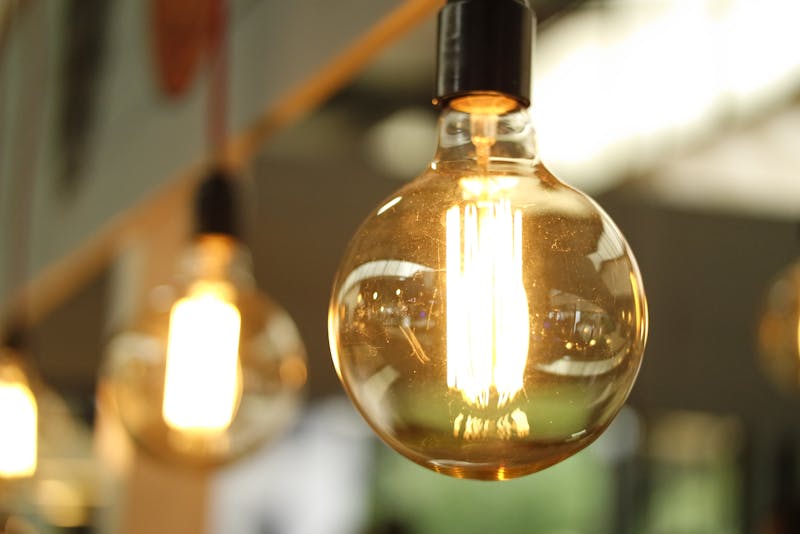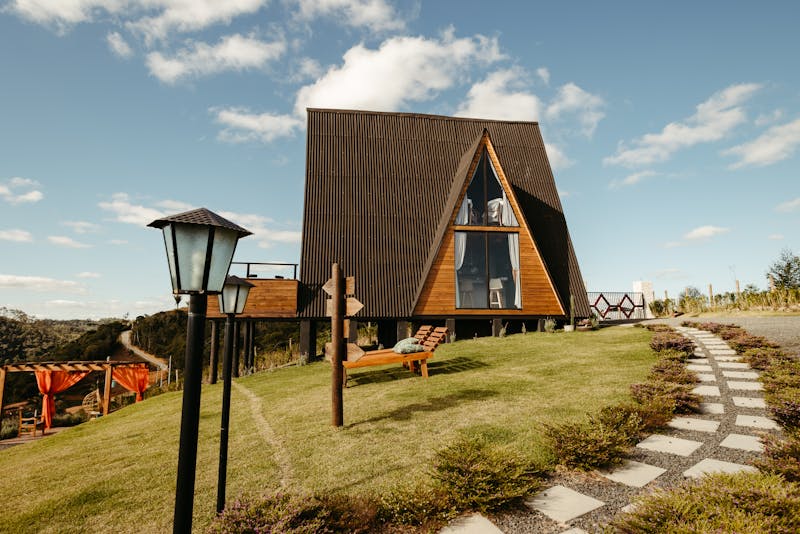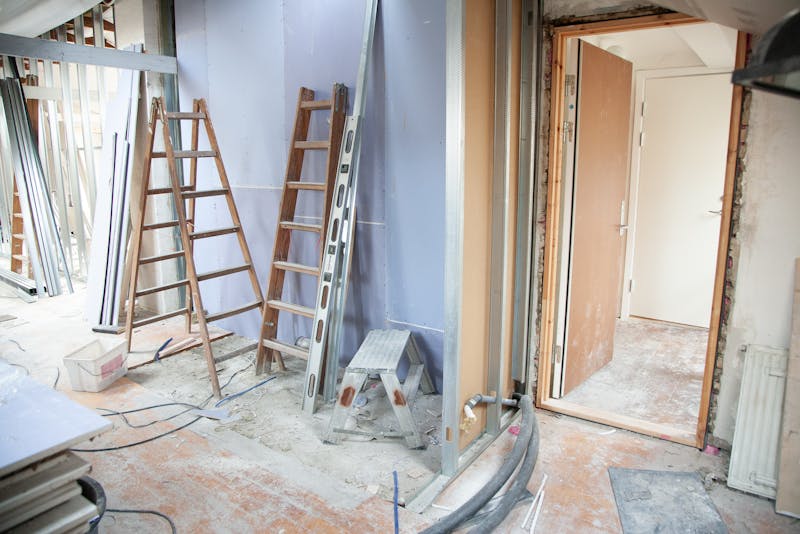- Sustainable homes focus on reducing resource consumption through energy efficiency, water conservation, and eco-friendly materials.
- Key features include proper insulation, renewable energy systems, low-flow fixtures, and smart home technology.
- Healthy indoor air quality is essential and can be achieved through good ventilation, low-VOC materials, and moisture control.
- Outdoor sustainability matters too, with native landscaping, permeable paving, and efficient lighting improving environmental impact.
- Sustainable homes offer long-term financial benefits such as lower utility costs, higher resale value, and reduced maintenance.
As more home buyers and homeowners look for ways to reduce living costs, improve comfort, and protect the environment, sustainable homes have shifted from a niche concept to a mainstream priority. A sustainable home is designed to use fewer resources, create less waste, and operate more efficiently while supporting long-term environmental and economic well-being. But sustainability isn’t limited to installing solar panels or switching to LED lights. It covers how a home is built, how it functions, how much energy it consumes, and how it contributes to the health of the people living in it.
This guide explores the essential features every modern sustainable home should have, helping you make informed decisions whether you’re building, renovating, or buying.
Understanding the Basics: What Makes a Home Truly Sustainable?
Before investing in sustainable upgrades or choosing an eco-friendly property, it’s essential to understand what truly defines a sustainable home. A sustainable home isn’t simply an energy-efficient building; it’s a holistic living space designed to reduce environmental impact, use resources responsibly, and create a healthier environment for occupants. These homes focus on long-term efficiency, meaning every feature contributes to saving energy, water, and materials. They also emphasize durability, comfort, and indoor environmental quality.
In this section, we explore the foundational principles that guide sustainable home design so you can evaluate whether your current home or potential property meets these standards.
Core principles of a sustainable home
A sustainable home generally follows three core pillars:
- Energy efficiency: Reduced energy consumption through design, materials, and technology.
- Water conservation: Responsible water use, recycling, and efficient fixtures.
- Environmental responsibility: Using eco-friendly materials, reducing waste, and supporting long-term ecological balance.
Why sustainable homes matter today
- Rising utility costs encourage more efficient living.
- Climate change requires homes that consume fewer natural resources.
- Buyers increasingly demand eco-friendly homes, improving property value.
- Sustainable homes offer healthier indoor environments with better ventilation and cleaner air.
Energy Efficiency: The Foundation of Every Sustainable Home

Energy efficiency is often the first thing people think of when they hear “sustainable home,” and for good reason. Energy-efficient features reduce a home’s carbon footprint and significantly lower monthly utility bills. A truly sustainable home integrates energy efficiency into every layer—from its orientation to the materials used and the technology powering it.
Whether you’re building a new home or improving an existing one, understanding these core energy-efficient features can help you make smart decisions that provide long-term savings and comfort.
Efficient home design and layout
The most sustainable homes begin with intelligent design that reduces energy waste.
- Maximized natural light through large windows helps lower daytime electricity use.
- Proper orientation allows the home to harness sunlight for natural warmth.
- Strategic shading prevents overheating in hotter climates.
Insulation and air sealing
A home that leaks air wastes significant energy.
- Use high-performance insulation for walls, roofs, and floors.
- Seal gaps in windows, doors, and ductwork.
- Consider insulated concrete forms (ICFs) or energy-efficient wall systems.
Energy-efficient windows
- Double or triple glazing reduces heat transfer.
- Low-E coatings keep interiors cooler and protect furniture.
- Frames made from fiberglass or vinyl improve insulation and durability.
LED lighting and smart electrical systems
- LED bulbs last longer and use less electricity.
- Smart switches and sensors help eliminate unnecessary energy use.
- Programmable lighting systems support energy-efficient living routines.
Renewable Energy Systems: Cutting Down Your Grid Dependency
For homeowners serious about sustainability, renewable energy is a game-changer. It allows you to generate clean power, reduce—or even eliminate—dependence on the electrical grid, and cut long-term utility costs. Renewable systems also increase a property’s value, making eco-friendly homes strong investments. In this section, we look at common renewable energy solutions and how they help modern homes operate more sustainably.
Solar power systems
Solar energy remains one of the most popular renewable options for homes.
- Solar panels generate electricity to power appliances and lighting.
- Solar batteries store energy for night use or power outages.
- Solar water heaters provide hot water with minimal electrical consumption.
Wind and micro-hydro systems
Although less common, some homeowners—especially those in rural settings—explore alternative renewable sources.
- Small wind turbines can be installed on properties with strong wind conditions.
- Micro-hydro generators work near flowing water sources.
Geothermal heating and cooling
Geothermal systems draw stable underground temperatures to heat or cool your home.
- Extremely efficient and long-lasting
- Lower monthly energy costs compared to traditional HVAC systems
- Ideal for homeowners seeking long-term sustainability
Water Conservation: How Sustainable Homes Reduce Waste and Save Money
Water scarcity is becoming a global concern, making water conservation a critical component of home sustainability. A sustainable home uses water efficiently, reduces waste, and often recycles greywater to support daily activities like gardening. Whether you live in a drought-prone area or simply want to reduce utility costs, implementing water-saving systems can significantly improve your home’s sustainability.
Low-flow fixtures and smart plumbing
These fixtures maintain performance while using less water.
- Low-flow toilets reduce water use per flush.
- Aerated faucets maintain pressure using minimal water.
- Smart leak detectors prevent wasted water and property damage.
Greywater recycling systems
Greywater systems allow homeowners to reuse water from sinks, showers, and laundry for irrigation.
- Reduces demand on freshwater sources
- Supports gardens and lawns without added costs
- Helps lower wastewater production
Rainwater harvesting
Collecting rainwater provides a free and sustainable water supply.
- Can be stored in small or large tanks
- Supports irrigation, cleaning, and certain plumbing uses
- Reduces stormwater runoff and erosion
Eco-Friendly Building Materials: Creating Homes That Last Longer and Perform Better
Sustainable homes rely heavily on materials that minimize environmental damage, reduce toxic emissions, and enhance the durability of the structure. When chosen wisely, eco-friendly building materials can significantly increase a home’s energy performance and lifespan. Whether you’re renovating or constructing from scratch, this section outlines the best materials to consider.
Recycled and reclaimed materials
- Reclaimed wood for flooring and accents
- Recycled steel for structural support
- Recycled glass for countertops and decorative features
Low-VOC and non-toxic materials
Indoor air quality is crucial for long-term health.
- Use low-VOC paints, adhesives, and finishes.
- Choose natural materials like cork or bamboo flooring.
- Install non-toxic insulation like cellulose or wool.
Durable exterior materials
Durability reduces waste and maintenance costs over time.
- Fiber cement siding
- Metal roofing
- Composite decking made from recycled plastics
Healthy Indoor Environments: Why Air Quality Matters in a Sustainable Home
Sustainable living isn’t only about saving energy and water; it also focuses on creating healthy spaces for families. Poor indoor air quality can lead to allergies, respiratory issues, and reduced comfort. Sustainable homes incorporate systems and materials that minimize pollutants, promote ventilation, and maintain a comfortable indoor climate.
Ventilation and air circulation
- Energy recovery ventilators (ERVs) improve fresh air flow.
- Mechanical ventilation prevents moisture buildup.
- Ceiling fans support natural air circulation.
Moisture control systems
Moisture can lead to mold, decay, and air quality issues.
- Vapor barriers and waterproofing prevent moisture intrusion.
- Proper roof ventilation reduces humidity in attic spaces.
- Dehumidifiers keep indoor air clean and comfortable.
Air-purifying materials
Innovative materials now contribute to cleaner indoor air.
- VOC-absorbing drywall
- Formaldehyde-free cabinetry
- Natural fiber carpets
Smart Home Technology: Enhancing Efficiency and Control

Technology plays a growing role in home sustainability by helping homeowners monitor and manage energy and resource consumption. Smart systems allow you to automate routines, reduce waste, and create a more efficient and comfortable living environment. For homeowners and buyers seeking convenience and savings, integrating smart technology is one of the easiest and most effective ways to embrace sustainability.
Smart thermostats
- Automatically adjust indoor temperatures based on usage patterns.
- Reduce heating and cooling costs by preventing overuse.
Energy monitoring systems
- Real-time data helps identify high-energy appliances.
- Allows homeowners to improve efficiency room by room.
Smart irrigation
- Soil and weather sensors adjust watering schedules automatically.
- Reduces outdoor water waste significantly.
What Is a Sustainable Home Without Proper Waste Management?
No sustainable home is complete without strategies for reducing waste. Home waste doesn’t only refer to garbage disposal; it includes how construction waste is handled, how household waste is minimized, and how recyclable materials are separated. A modern, eco-friendly home creates systems that keep waste out of landfills and promote responsible consumption.
Composting systems
- Kitchen scraps become nutrient-rich soil.
- Reduces landfill contributions and supports healthier gardens.
Recycling stations
- Organized spaces for paper, plastic, glass, and metal.
- Encourages consistent recycling habits throughout the household.
Responsible construction waste management
Home builders or renovators can reduce environmental impact by:
- Repurposing usable materials
- Donating functional items like doors or fixtures
- Separating recyclable debris during demolition
Outdoor Sustainability: Designing Eco-Friendly Home Exteriors
Sustainable living extends beyond the four walls of a home. Well-designed outdoor areas can reduce energy use, improve drainage, and support local ecosystems. Home buyers often overlook outdoor sustainability, but exterior design plays a major role in long-term environmental performance.
Native landscaping
- Native plants require less water and maintenance.
- Reduces dependence on fertilizers and pesticides.
Permeable paving
- Allows rainwater to seep into the ground.
- Prevents flooding and erosion.
Efficient outdoor lighting
- Solar-powered outdoor lights reduce electrical consumption.
- Motion sensors prevent unnecessary nighttime lighting.
Long-Term Financial Benefits: How Sustainable Homes Save Money Over Time
At first glance, sustainable features may seem like an additional expense, but they are actually long-term investments. Sustainable homes often cost less to operate, maintain, and repair. Home buyers also appreciate environmentally responsible features, making eco-friendly homes more attractive in the real estate market.
Lower utility costs
Efficient lighting, insulation, appliances, and renewable energy can significantly cut energy bills.
Higher property value
Eco-friendly homes appeal to modern buyers, especially younger generations.
Reduced maintenance
Durable materials and water-efficient features require less frequent repairs or replacements.
Final Thoughts: Moving Toward a More Sustainable Way of Living
A sustainable home is more than a trend; it’s a smart and responsible approach to modern living. From energy-efficient features and renewable power systems to eco-friendly materials and healthier indoor environments, sustainable homes offer comfort, efficiency, and long-term financial benefits. Whether you’re a homeowner planning renovations or a buyer searching for an eco-friendly property, incorporating these essential features can help you build a future-ready home that adds value to your life and the environment.



